Bird Nerdery, Merganser Style
There are always exceptions to the 'rule.' Which really, means, in nature 'rules' are not real. There are 'norms' and 'tendencies,' sure, but rules?

They are easily the most abundant ducks I see making their livings and raising families along the lower Deschutes River in Oregon. I encounter them often while fishing, flying upriver and down, just feet above the water. Sometimes they seem to fly right toward me and pass so close that I can hear the whistling of their wings.
I know of one submerged sandbar (sixty feet long and usually just a few inches below the water’s surface in summer), between Rattlesnake and Mack’s Canyon campgrounds where as many as forty females and juveniles will gather each mid-summer evening to roost, kept mostly safe from unseen attackers by a ten foot expanse of thigh deep water behind them and the entire swirling river in front. I bushwhacked down to the river once and waded out to that submerged sandbar in late afternoon, carrying a cold beer in a koozie and a lawn chair. Swam a bit, smoked a cigar with my feet in the cool water and felt like the king of all that I could see.
The field guides say Common Mergansers (Mergus merganser), mostly nest in cavities, sometimes in trees, old woodpecker holes and such or in undercut banks. Makes sense, but in this case, doesn’t quite match up with my recently recorded observations.
According to All About Birds: “The female chooses the nest site, which is usually in a natural cavity or woodpecker hole in a live or dead tree, up to 100 feet off the ground and within a mile of water.”
According to Audubon: “Nest site is near water, usually in large tree cavity; also in crevices in rock, in holes under tree roots or undercut banks, or in nest boxes. Occasionally in buildings.”
According to iNaturalist: “Nesting is usually in a tree cavity, so the species requires mature forest as its breeding habitat; they also readily use large nest boxes where these are available, requiring an entrance hole 15 cm (6 in) in diameter. In treeless areas such as the mountains of Central Asia, they use holes in cliffs and steep, high banks, sometimes a considerable distances from the water.”
John James Audubon had a somewhat different take in his famous book of long ago, Birds of America: “Many writers have said that this bird breeds in the hollows of trees, or on their branches; but of the various nests which I have found, not one occurred in such situations; and the Hooded Merganser is the only species of this genus which I have observed nestling in an elevated place.”
“…The islands on which the Goosander is wont to breed are mostly small, as if selected for the purpose of allowing the sitting bird to get soon to the water in case of danger. “
I’ve never yet stumbled upon a Goosander nest on the ground near the river during any of my arduous, fly-tossing or berry-picking wades. Doesn’t mean they weren’t there, only that I’ve never happened upon one. But this last trip, a week or more ago, in early morning light I witnessed, again and again, merganser after merganser flying up, up, up into the rocky fastnesses, high above the river, presumably taking breakfast to their nestlings, in nests hidden among the cliffs and rocks. Or, well… something.
I can hardly imagine how this works. Those rocky, basalt cliffs are an absolute oven, late morning through at least late-afternoon on any clear summer day, with temperatures rising well above a hundred degrees and zero shade.
So, while the merganser moms are swimming and diving for fish and eels, and snails in the cool waters of the river below are the little ones waiting cliffside, often in sweltering sun for their next meal delivery?
I see turkey vultures soaring and crows flying, and sometimes hassling the vultures right up there in that same zone. How do they not see these nestlings and gobble them up while their moms are away for hours, hunting?
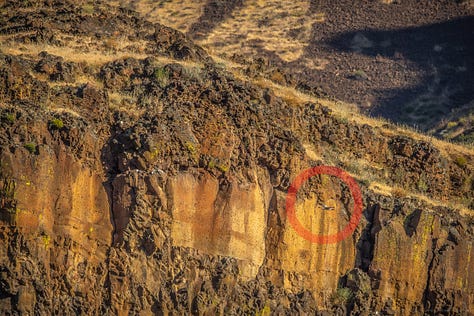
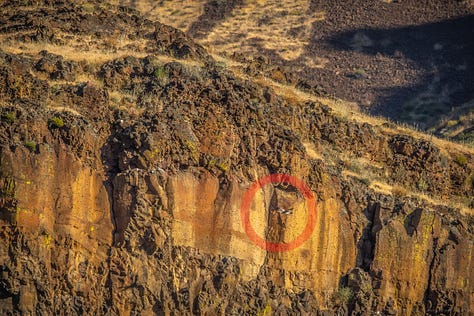
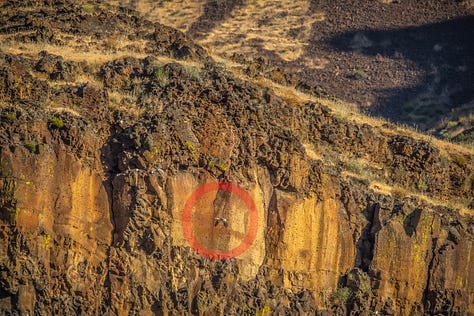

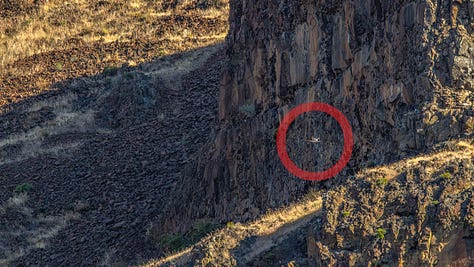
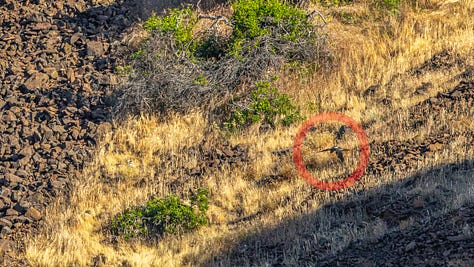
And then there’s the question of how they (the babies), get down to the river from way up there, whether eventually, or right away. Again, the guides say that shortly after hatching, the young are taken to the rivers and lakes, carried by the mother on her back. Yee-haw!
I’ve gotta say, I really, really want to see that. Little, reddish-brown fur-balls climbing onto mom’s back and holding on for dear life while rocketing down through cliffside air to the safety and cooling, and abundant food in the river below.
iNaturalist: “The female lays 6–17 (most often 8–12) white to yellowish eggs, and raises one brood per season. The ducklings are carried by the mother on her back to rivers or lakes immediately after hatching, where they feed on freshwater invertebrates and small fish fry, fledging at 60–70 days of age.”
It’s a cinch she’s not walking them down.
John James Audubon, Birds of America, again: “The young are led to the water in a few hours after they are hatched, and are covered with fur-like hair, of a reddish-brown colour about the head and neck, the body lightish grey.
They are excellent divers, and run on the surface with surprising velocity; but they are not able to fly for nearly two months, when, being fat, they are easily fatigued if closely pursued, and on such occasions will often betake themselves to the shore, lie down, and even allow you to lay hold of them.”
All About Birds: “The male usually abandons the nest during incubation, and the female cares for the ducklings on her own. She escorts them from the small streams and ponds near the nest site to larger lakes, rivers, and bays downstream.”
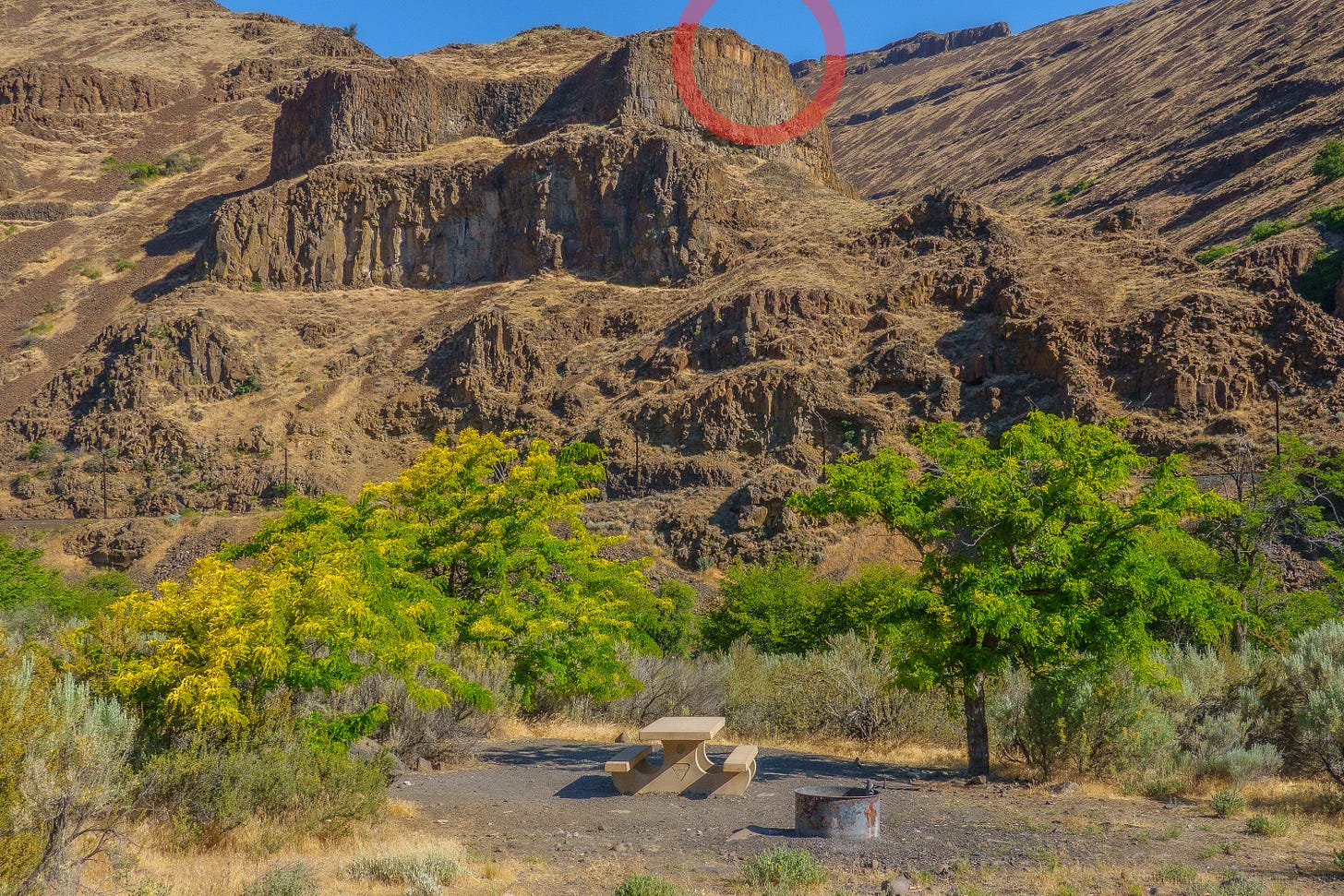
Suffice it to say, I do not have the whole story here, but that is also kind of the point. Things are not always as they are supposed to be, or as the experts surmise. Or Claim. Nature is fascinating and life is absolutely miraculous in ‘finding a way,’ in working out a new means of doing things, or perhaps evolving a specifically atuned way of doing things, given the situation’s very unique, ‘givens.’ What Mr. Audubon observed in Kentucky or Texas quite obviously does not play out quite the same in north-central Oregon, in a deep, river canyon flowing through the desert.
I absolutely love that it is so.
In The Garden Of His Imagination is a reader-supported publication and you may choose to be an important part of bringing more of these sorts of stories to the playground. To receive all my new posts and support my storytelling work, please consider becoming a paid subscriber. And for those who can’t afford or don’t yet see the value proposition in that, please become a free subscriber to receive notifications each time I post up new content.





I cherish every time I am with naturalists scientists avid outdoors people in the field with every kind of reference you can imagine, adults in glee with inner child wonder, puzzled with what they see and hear, sharing ideas and observations. I look forward to more of your posts! I am not as near nor do I have as much free time as I’d like to venture outside with friends. Thank you for this. Btw mergansers another of my favorite birds.
Those pictures are wonderful, especially the merganser flying by that ancient tree and the cliffs! Nature continues to adapt to their particular environments and I love how you notice the differences between references and your own observations.